At NASA, there is space for everybody! Subscribe to NASA’s official YouTube channel to explore the universe and discover our home planet. Visit https://www.nasa.gov for more!
Producer/Editor: Lacey Young
Music: Universal Production Music

At NASA, there is space for everybody! Subscribe to NASA’s official YouTube channel to explore the universe and discover our home planet. Visit https://www.nasa.gov for more!
Producer/Editor: Lacey Young
Music: Universal Production Music
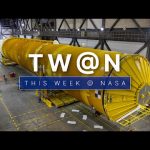
Making progress on our Artemis Moon rocket, images from a close encounter with a Jovian moon, and a ring of fire for our Moon … a few of the stories to tell you about – This Week at NASA!
Download Link: https://images.nasa.gov/details-Making%20Progress%20on%20Our%20Artemis%20Moon%20Rocket%20on%20This%20Week%20@NASA%20%E2%80%93%20June%2011,%202021
Video Credits
Producer/Writer: Andre Valentine
Editor: Amy Leniart

We are all connected to and by Earth — whether it’s the trees and plants that give us the oxygen we breathe, the snow-capped mountains that provide the water we drink, or the breathtaking geophysical forces that shape the land beneath our feet. NASA has over 20 satellites measuring the height of oceans and inland water, clouds and precipitation, carbon dioxide and much more. By understanding our changing world, we improve lives and safeguard our future.
https://images.nasa.gov/details-Our%20Planet%20Our%20Home%20An%20Earth%20Day%20Perspective_S
Video Credits:
Producer/Editor: Amy Leniart
Writer: Jim Wilson
Co-Writers: Karen Fox, Amy Leniart, Tylar Greene
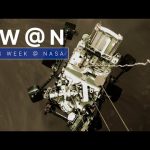
Our Perseverance rover takes up residence on Mars, the space station’s next commercial resupply mission, and a new date for a commercial crew test flight … a few of the stories to tell you about – This Week at NASA!
Download Link: https://images.nasa.gov/details-Our%20Perseverance%20Rover%20Takes%20up%20Residence%20on%20Mars%20on%20This%20Week%20@NASA%20%E2%80%93%20February%2020,%202021

On Feb. 18, join us in welcoming our Perseverance Mars rover to its new home on Mars. After the entry into Mars’ atmosphere and descent to landing, it will touch down in a basin called Jezero Crater. The rover will search for signs of ancient microbial life & collect samples for future missions to return. It’s brought a friend to Mars as well – the Ingenuity Mars helicopter, a technology demonstration that will attempt the first-ever powered flight on another planet.
Credit: NASA
Producer/Editor: Mark Hailey

Tracking our next Mars landing, the science on the next station resupply mission, and the newest space station flight directors … a few of the stories to tell you about – This Week at NASA!
Download Link: https://images.nasa.gov/details-Tracking%20Our%20Next_Mars%20Landing%20on%20This%20Week%20@NASA%20%E2%80%93%20February_12,%202021

NASA has touched the surface of asteroid Bennu to collect the agency’s first ever asteroid sample, which will one day shed new insights on the history of our solar system… so what’s next? Join NASA’s OSIRIS-REx Asteroid Sample Return Mission experts and ask them your questions! Submit them using #ToBennuAndBack and tune in today at 6:15 p.m. ET as they walk you through new images and videos captured by the spacecraft as it descended down to the asteroid’s surface.

The Sun goes through regular cycles of activity approximately every 11 years, and tracking these cycles is a key part of better understanding the Sun and mitigating its impacts on human technology and astronauts in space. Join NASA and NOAA experts Tuesday, Sept. 15 at 3:00 p.m. EDT as they discuss predictions for the upcoming solar cycle. Send in your questions by commenting below or by using #askNASA.

Today we made history as NASA Astronauts Robert Behnken and Douglas Hurley safely and successfully splashed down into the Gulf of Mexico after two months on board the International Space Station. This completes the flight demonstration of the SpaceX Dragon Endeavour spacecraft, which will now be used to ferry astronauts to and from the space station from American soil. Now that our #LaunchAmerica crew has returned to Earth, join us in welcoming them as they fly into Ellington Field, home of our astronaut corps:
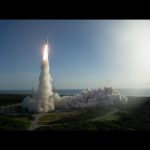
Our next Mars rover is on its way, preparing for the historic return of a Commercial Crew mission, and naming the crew for a future mission … a few of the stories to tell you about – This Week at NASA!
Download Link: https://images.nasa.gov/details-Our%20Next%20Mars%20Rover%20is%20Headed%20to%20The%20Red%20Planet%20on%20This%20Week%20@NASA%20%E2%80%93%20July%2031,%202020
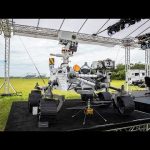
Reporting from the Countdown Clock at NASA’s Kennedy Space Center — America’s spaceport — officials from NASA will provide a #CountdownToMars update for the July 30 launch of the Mars 2020 Perseverance rover on a United Launch Alliance Atlas V rocket from Space Launch Complex 41 at Cape Canaveral Air Force Station in Florida. The launch window is approximately two hours, with a launch opportunity every five minutes.
Watch LIVE to see NASA Administrator Jim Bridenstine, NASA Deputy Administrator Jim Morhard, Kennedy Space Center Director Bob Cabana, and astronaut Zena Cardman share their insights about the mission.
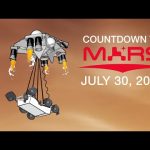
We’re going back to Mars! Our newest rover is named Perseverance, and will be launching soon for its seven-month journey to the Red Planet to search for signs of ancient life. And it’s bringing along a friend: a little helicopter named Ingenuity! Ingenuity will test the first powered flight on Mars.
Join us in wishing Perseverance and Ingenuity “bon voyage” on their #CountdownToMars! https://mars.nasa.gov/mars2020/

Our next Mars Rover gets closer to launch, a comet spotted from the space station and we’re ready to build a spacecraft to explore a metal-rich asteroid … a few of the stories to tell you about – This Week at NASA!
Download Link: https://images.nasa.gov/details-Our%20next%20Mars%20Rover%20gets%20closer%20to%20launch%20on%20This%20Week%20@NASA%20%E2%80%93%20July%2010,%202020
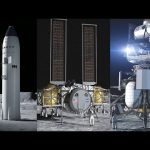
Highlighting our upcoming launch of astronauts from Florida, some news about our Moon to Mars effort, and our Mars helicopter has a new name … a few of the stories to tell you about – This Week at NASA!
This video is available for download from NASA’s Image and Video Library: https://images.nasa.gov/details-Highlighting%20Our%20Upcoming%20Launch%20of%20Astronauts%20from%20Florida%20on%20This%20Week%20@NASA%20%E2%80%93%20May%201,%202020
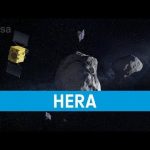
Hera will show us things we’ve never seen before. Astrophysicist and Queen guitarist Brian May tells the story of our mission that would be humanity’s first-ever spacecraft to visit a double asteroid.
The asteroid system – named Didymos – is typical of the thousands that pose an impact risk to our planet, and even the smaller of the two would be big enough to destroy an entire city if it were to collide with Earth.
Hera will help us to find out if it would be possible to deflect such an asteroid on a collision course with Earth. The mission will revolutionise our understanding of asteroids and how to protect ourselves from them, and therefore could be crucial for saving our planet.
First, NASA will crash its DART spacecraft into the smaller asteroid – known as Didymoon – before Hera comes in to map the resulting impact crater and measure the asteroid’s mass. Hera will carry two CubeSats on board, which will be able to fly much closer to the asteroid’s surface, carrying out crucial scientific studies, before touching down. Hera’s up-close observations will turn asteroid deflection into a well-understood planetary defence technique.
The Hera mission will be presented to our Space19+ meeting this November, where Europe’s space ministers will take a final decision on flying the mission, as part of the Agency’s broader planetary defence initiatives that aim to protect European and world citizens.
Learn more about Hera: http://bit.ly/ESAHera
Copyright: ESA – Science Office
★ Subscribe: http://bit.ly/ESAsubscribe and click twice on the bell button to receive our notifications.
Check out our full video catalog: http://bit.ly/SpaceInVideos
Follow us on Twitter: http://bit.ly/ESAonTwitter
On Facebook: http://bit.ly/ESAonFacebook
On Instagram: http://bit.ly/ESAonInstagram
On Flickr: http://bit.ly/ESAonFlickr
We are Europe’s gateway to space. Our mission is to shape the development of Europe’s space capability and ensure that investment in space continues to deliver benefits to the citizens of Europe and the world. Check out http://www.esa.int/ESA to get up to speed on everything space related.
Copyright information about our videos is available here: http://www.esa.int/spaceinvideos/Terms_and_Conditions
#ESA
#PlanetaryDefense
#HERAmission

Introducing the first American companies who will deliver the science, technology and research that will set the stage for humanity’s return to the Moon by 2024. News release: https://go.nasa.gov/2Xd4zJL

Of all the planets NASA has explored, none have matched the dynamic complexity of our own. Earth is a very special place. From the vantage point of space, the perspective of sky and sea, and all across the land, we study our planet not only to learn about it, but also to protect it.

The plan to put humans on the Moon by 2024, wrapping up a series of spacewalks on the space station, and an historic first look at a black hole … a few of the stories to tell you about – This Week at NASA!
This video is available for download from NASA’s Image and Video Library: https://images.nasa.gov/details-NHQ_2019_0412_Our%20Five-Year%20Plan%20to%20Return%20Humans%20to%20the%20Moon%20on%20This%20Week%20@NASA%20%E2%80%93%20April%2012,%202019.html
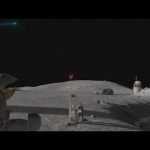
Accelerating a human return to the Moon, wrapping up testing of our Space Launch System rocket engines, and Curiosity captures eclipses on Mars … a few of the stories to tell you about – This Week at NASA!
This video is available for download from NASA’s Image and Video Library: https://images.nasa.gov/details-NHQ_2019_0405_Discussing%20our%20Accelerated%20Return%20of%20Humans%20to%20the%20Moon%20on%20This%20Week%20@NASA%20%E2%80%93%20April%205,%202019.html

Remembering our fallen heroes, a milestone for our InSight lander on Mars, and, data released on our global temperature … a few of the stories to tell you about – This Week at NASA!
This video is available for download from NASA’s Image and Video Library: https://images.nasa.gov/details-NHQ_2019_0208_Remembering%20our%20Fallen%20Heroes%20on%20This%20Week%20@NASA%20%E2%80%93%20February%208,%202019.html

Join Paxi as he explores the Moon. In this video, targeted at children aged between 6 and 12, Paxi explains the Moon’s phases and eclipses.
The adventures of Paxi are also available in the following languages:
🇨🇿 https://youtu.be/C3CoOgHxsAk
🇩🇰 https://youtu.be/G9AbC5KlIPA
🇳🇱 https://youtu.be/rq_GaHAz8F4
🇫🇮 https://youtu.be/eFg6n4WLDho
🇫🇷 https://youtu.be/HPFXqqe971I
🇩🇪 https://youtu.be/RuTuefZC45Q
🇮🇹 https://youtu.be/Fv56Nk2kpqU
🇳🇴 https://youtu.be/K9BJfsgIMcE
🇵🇱 https://youtu.be/K_KqWr4oHmA
🇵🇹 https://youtu.be/i7Zq545gMOo
🇷🇴 https://youtu.be/X-o9PmbDNzA
🇪🇸 https://youtu.be/MjJxaCBjUQ4
🇸🇪 https://youtu.be/CGlZiLBGruo
★ Subscribe: http://bit.ly/ESAsubscribe
Check out our full video catalog: http://bit.ly/SpaceInVideos
Follow ESA on Twitter: http://bit.ly/ESAonTwitter
On Facebook: http://bit.ly/ESAonFacebook
On Instagram: http://bit.ly/ESAonInstagram
On Flickr: http://bit.ly/ESAonFlickr
ESA is Europe’s gateway to space. Our mission is to shape the development of Europe’s space capability and ensure that investment in space continues to deliver benefits to the citizens of Europe and the world. Check out http://www.esa.int/ESA to get up to speed on everything space related.
Copyright information about our videos is available here: http://www.esa.int/spaceinvideos/Terms_and_Conditions

Netflix series black mirror is futuristic but is it really that far off from the truth?!
#smokiedavis
#netflix
#blackmirror

Our mission to touch the Sun is on its way, Administrator Bridenstine visits NASA spaceflight facilities, and an update on our first-ever asteroid sample return mission … a few of the stories to tell you about – This Week at NASA!
This video is available for download from NASA’s Image and Video Library: https://images.nasa.gov/details-Our%20Journey%20to%20Touch%20the%20Sun%20is%20Underway%20on%20This%20Week%20@NASA%20%E2%80%93%20August%2017,%202018.html
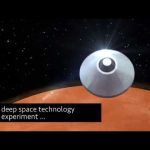
Our newest mission to Mars is on its way, Vice President Pence visits our Jet Propulsion Laboratory, and observing our planet’s ever-changing water cycle – a few of the stories to tell you about – This Week at NASA!
This video is available for download from NASA’s Image and Video Library: https://images.nasa.gov/details-NHQ_20218_0505_Our%20Newest%20Mission%20to%20Mars%20on%20This%20Week%20@NASA%20%E2%80%93%20May%205,%202018.html

During his Feb. 9 State of NASA speech at Langley Research Center in Hampton, Va, Administrator Charles Bolden characterized President Obama’s $19 billion Fiscal Year 2017 budget proposal for NASA as a vote of confidence and an indication of the agency’s strength. Bolden noted that the investments in the FY2017 budget proposal will empower NASA to continue to work with partners both in and out of government to develop the technologies that drive exploration – to build an even stronger future in which NASA continues reaching for new heights for the benefit of all humankind. Also, Space station one-year crew update, Increased land water slows sea level rise, Gravitational waves detected, and more!

NASA’s Director of Planetary Science, Jim Green, discusses the Jan. 20 Astronomical Journal science paper that points to the possibility of a new “Planet 9” in our solar system beyond Pluto, examining the scientific process and inviting you to have a front row seat to our exploration of the solar system.
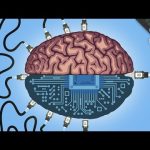
Would it ever be possible to one day upload our consciousness to a computer? How would we go about this?
Read More:
The Brain vs. The Computer
https://faculty.washington.edu/chudler/bvc.html
“Throughout history, people have compared the brain to different inventions.”
Scientists Are Convinced Mind Transfer Is the Key to Immortality
http://motherboard.vice.com/blog/scientists-are-convinced-mind-transfer-is-the-key-to-immortality
“Call it mind transfer, uploading, brain backup, whatever—the idea of copying the human brain to a computer so it can live on without the body has a strong hold on futurists, neuroscientists, and folks that just want to live forever.”
Mind-reading Technology Speeds Ahead
http://www.scientificamerican.com/article/mind-reading-technology-speeds-ahead/
“Jack Gallant perches on the edge of a swivel chair in his lab at the University of California, Berkeley, fixated on the screen of a computer that is trying to decode someone’s thoughts.”
Engineering a memory with LTD and LTP
http://www.nature.com/nature/journal/v511/n7509/full/nature13294.html
“It has been proposed that memories are encoded by modification of synaptic strengths through cellular mechanisms such as long-term potentiation (LTP) and long-term depression (LTD).”
MIT scientists implant a false memory into a mouse’s brain
http://www.washingtonpost.com/national/health-science/inception-mit-scientists-implant-a-false-memory-into-a-mouses-brain/2013/07/25/47bdee7a-f49a-11e2-a2f1-a7acf9bd5d3a_story.html
“Sometime soon, a lab mouse could wake up thinking he had snuggled up to a girl mouse the night before. But he hadn’t. The memory would be fake.”
If your brain were a computer, how much storage space would it have?
http://io9.com/if-your-brain-were-a-computer-how-much-storage-space-w-509687776
“The comparison between the human brain and a computer is not a perfect one, but it does lend itself to some interesting lines of inquiry. For instance: what is the storage capacity of your brain?”
____________________
DNews is dedicated to satisfying your curiosity and to bringing you mind-bending stories & perspectives you won’t find anywhere else! New videos twice daily.
Watch More DNews on TestTube http://testtube.com/dnews
Subscribe now! http://www.youtube.com/subscription_center?add_user=dnewschannel
DNews on Twitter http://twitter.com/dnews
Trace Dominguez on Twitter https://twitter.com/tracedominguez
Julia Wilde on Twitter https://twitter.com/julia_sci
DNews on Facebook https://facebook.com/DiscoveryNews
DNews on Google+ http://gplus.to/dnews
Discovery News http://discoverynews.com
Download the TestTube App: http://testu.be/1ndmmMq

This virtual journey shows the different components that make up our home galaxy, the Milky Way, which contains about a hundred billion stars.
It starts at the black hole at the centre of the Milky Way and with the stars that orbit around it, before zooming out through the central Galactic Bulge, which hosts about ten billion stars.
The journey continues through a younger population of stars in the stellar disc, home to most of the Milky Way’s stars, and which is embedded in a slightly larger gaseous disc. Stars in the disc are arranged in a spiral arm pattern and orbit the centre of the Galaxy.
The discs and bulge are embedded in the stellar halo, a spherical structure that consists of a large number of globular clusters — the oldest population of stars in the Galaxy — as well as many isolated stars. An even larger halo of invisible dark matter is inferred by its gravitational effect on the motions of stars in the Galaxy.
Looking at a face-on view of the Galaxy we see the position of our Sun, located at a distance of about 26 000 light-years from the Galactic Centre.
Finally, the extent of the stellar survey conducted by ESA’s Hipparcos mission is shown, which surveyed more than 100 000 stars up to 300 light-years away from the Sun. In comparison, ESA’s Gaia survey will study one billion stars out to 30 000 light-years away.
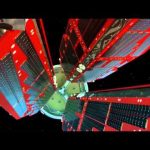
Earth’s magnetic field is our life saver, protecting us from the energetic solar wind. The Swarm satellites will measure Earth’s magnetic field to allow us to understand it for a safer future.
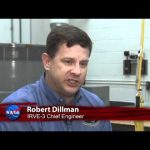
NASA Television helped observe the last transit of Venus we’ll see here on Earth until 2117 by showcasing live-streaming Websites the world over, including observations made by scientists in central Australia, by the NASA Edge team, stationed atop the Mauna Kea Observatory in Hawaii, by scientists at NASA Headquarters and other NASA Centers around the country. Also, development of technologies to enable exploration of extreme environments such as those found on Venus, The Voyage of Space Shuttle Enterprise concludes in New York, Girl Scouts Rock at NASA Headquarters, Development of inflatable spacecraft and the NASA family mourns the passing of Ray Bradbury, one of our era’s greatest and most noted science fiction/fantasy writers.

The Moon has fascinated mankind throughout the ages. Discover how our Moon was formed, probably by a collision with a huge object when Earth was very young.